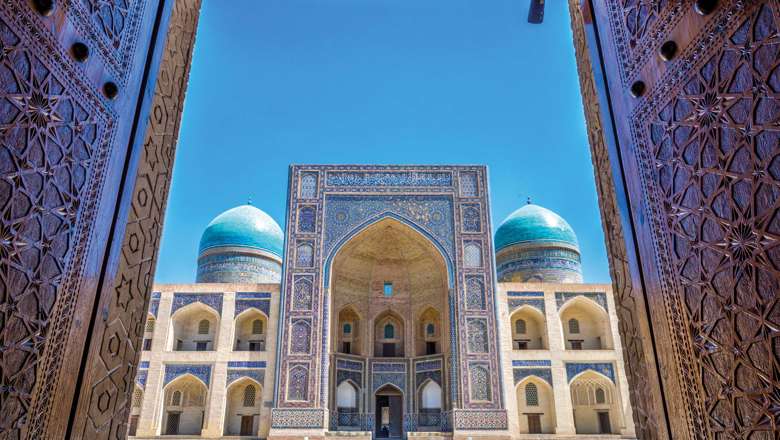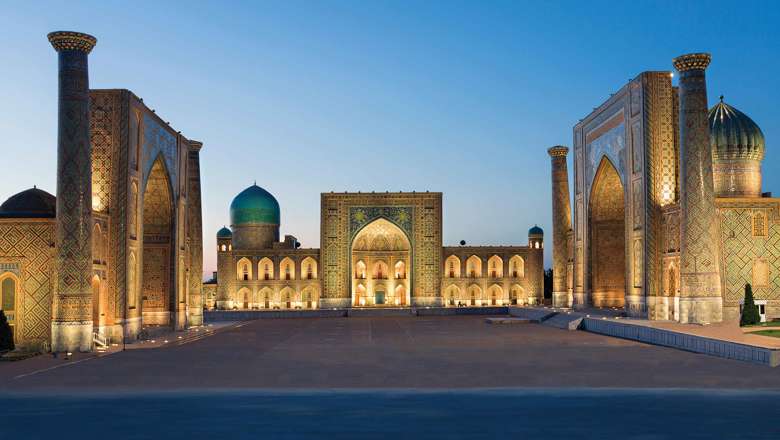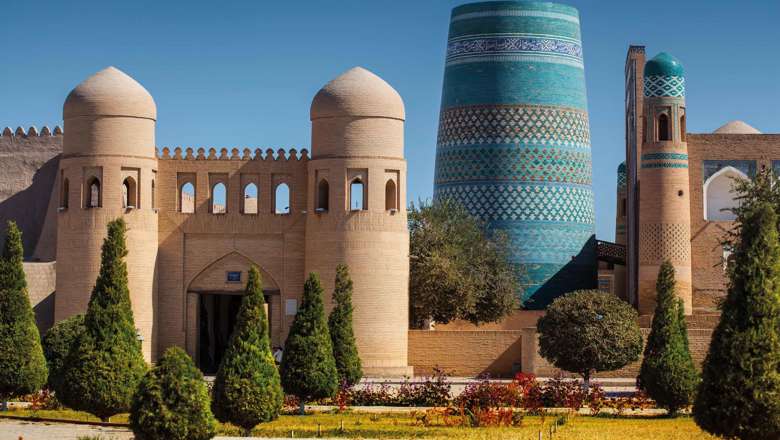A personal account from the Orient Silk Road Express
Land-locked and Stan-locked, we began our “Orient Silk Road Express” journey in modern Tashkent, Uzbekistan’s capital. Combining hotel stays with train overnights while experiencing the sights of Shahrisabz, Samarkand, Khiva and Bukhara.
Tashkent is a city that was rebuilt after the 1966 earthquake under Soviet rule. I enjoyed our visits to the various sites which included the Memorial of the victims of the earthquake, Independent Square, Navoi Theatre, Tomb of the Unknown Soldier, Madrasah Kukeldash and the Hast-Imam. The Hast-Imam is the location of the world famous Quran of Caliph Ottoman has been preserved. I would recommend a ride on the metro. It is reminiscent of the Moscow metro albeit on a much smaller scale, lots of marble, spacious and each station has a different theme; Kosmonavtlar with its floating cosmonauts’ springs to mind.

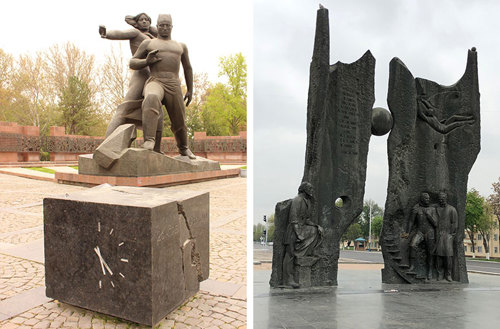
We boarded our private train for this once in a lifetime experience. Once settled into our compartment, which was very comfortable, we were ready for our journey through time along this historical route. The journey from Tashkent to Shakhrisabz was 589km.
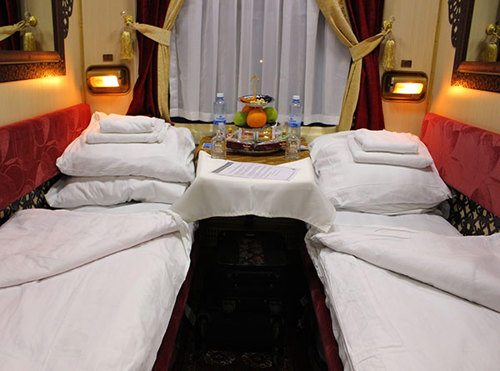
The green city of Shakhrisabz, one of the most ancient cities of this beautiful country and best known as the birthplace of Amir Timur (Tamerlane) the 14th century Mongol conqueror, was our first stop. The most popular architectural monuments here are; Ak Serai “The White Palace”, in its day was the largest palace in Central Asia, however only two portals remain today with some original mosaic tiles. A statue of Tamerlane stands in its shadows. The Blue Dome Mosque; built by Ulug Beg for his father and which can be seen from almost any part of the city. The memorial complex Dorus Saodat; with its turquoise domes, this complex was to be the burial place of Tamerlane and where his empty crypt was discovered became the mausoleum of his eldest son who died suddenly. We also experienced a folklore performance in a small village and got to meet some locals.
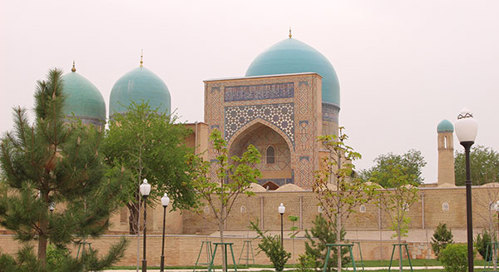
Our private train departed for our 233km overnight journey to Tamerlane’s capital, Samarkand where we would spend the following two nights. This crossroads of culture, rich in magnificent historical monuments was a delight. Sites include the ruins of Bibi-Khanym Mosque, built in honour of his favourite wife; it could not withstand the test of time and had collapsed in the very first years after its construction. The Shah-i-Zinda necropolis known as “Cemetery Street” due to the huge number of royals buried in the surrounding tombs and the impressive Gur Emir Mausoleum with its golden interior.

However, for me it was all about Registan Square and it did not disappoint. I had great expectations as my colleagues, who had previously visited, had advised their visit was better than that to The Taj Mahal! With its three towering madrassas, each having unique decorations and artistic features, saturated from head to toe in mesmerising turquoise and indigo tiles and mosaics, beautiful inside and out. To witness this beautiful square; it deserves multiple views and at different times, in daylight it was amazing and in the evening more so when lit up. I visited three times while in Samarkand!
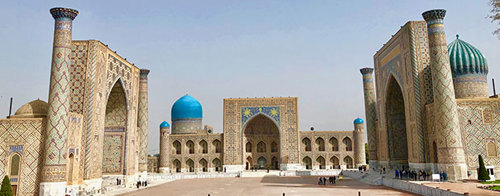
I was ready to hop back on board our private train and travel the 737km to Urgench and then onto the highlight of my trip - Khiva! It’s small, compact and atmospheric. On entering this ancient city fortress, we were greeted by the Kalta-Minar minaret, the cities symbol. I used it as a focal point to navigate its tangled streets and alleys. These stoned paved streets and alleyways lead you to the madrasahs, mosques, palaces and minarets in this “open air museum”. My climb up one of the minarets to have a bird’s eye view of this magical city was so worth it! Lunch was taken at the old Summer Palace of the Emir.
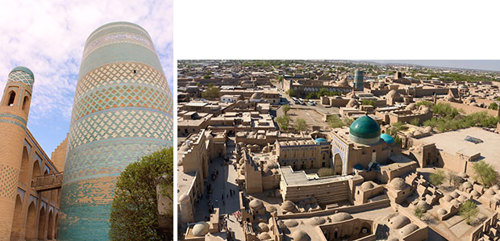
Overnight was spent on board as we travelled the 674km to our final destination, Bukhara for overnight. There are over 140 architectural monuments in this city museum. Like Khiva, the minaret is the symbol of the city. In bygone years it acted as a lighthouse and showed the way to trade caravans and pilgrims. We visited Bukhara’s oldest monument Ismail Samanid Mausoleum, very different to others seen previously because of the intricacy of its brickwork and there is no sign of any colour. Other sites visited included Bolo Haouze mosque also known as the mosque of 40 pillars, Chor Minor which translates as “four minarets”, the multiple madrassas and the Arc fortress, a citadel which was a residence of local rulers for several centuries. I would recommend joining the locals and sit in the shade of the huge ancient mulberry trees in Lyabi Hauz. Also, visit one of the dome covered bazaars, which will take you back in time to how it used to be 1000 years ago.
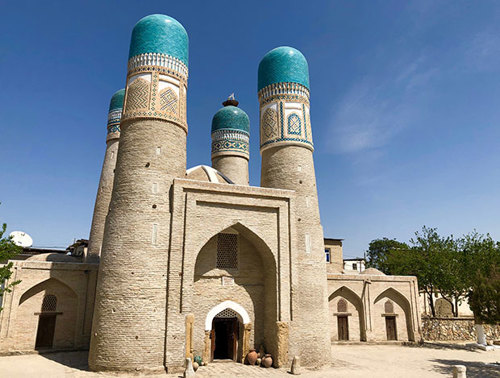
I will never forget the Uzbek hospitality, the older women in the bold stripes of their tie-died gowns, topped with brightly patterned scarves and the men with their embroidered skullcaps however it is their smiles and openness that captures you.

The sights of Uzbekistan are much more than the bright ceramics. The majestic blue domes, turquoise tiles and mosaics take your breath away. At times, I have to admit I was distracted by their beauty from listening more carefully to our guide’s narration of their rich and colourful history.
Uzbekistan is an embracing country with warm hearted people and a plethora of UNESCO World Heritage Sites. Travelling this ancient Silk Road, one of the greatest trade routes in history from Tamerlane’s capital, ancient Khiva and Bukhara by private train was an incredible experience!


